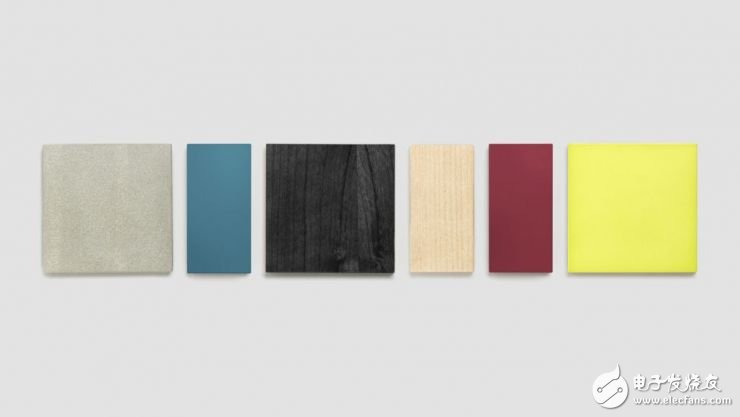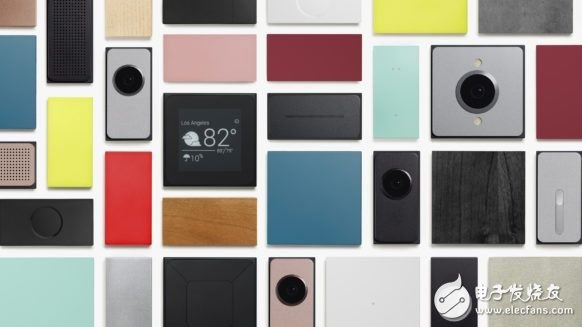It has been more than a year since Google announced Project Ara to the public, and a lot has happened during the period. To date, the project has not yet: create a smartphone that can interchange parts at any time. Add a wide-angle camera module when you climb the mountain. When playing a football game, replace the telephoto lens and add a larger battery. When flying long distances, replace the electronic ink display to optimize screen reading. The idea is that the ability of the switch module extends the life of smartphone devices from two years to five years, reducing waste caused by rushing to upgrade.
The question is how can it be done? Today, Rafa Camargo, Ara's technical project leader, wants to tell me about his efforts. He picked up a black phone from the white table in front of him, flipped it over and tapped the power button. It turned on. Next, he picked up the camera module on the table, put it in the phone, turned on the camera app, and quickly took a high-definition photo. "This is the camera," Camargo said.
Finally succeeded! After years of failed samples, public squandering, and worrying silence, Ara succeeded. About 30 people in ATAP (Advanced Technologies and Projects: Advanced Technology and Projects) use Ara as their main mobile phone. Camargo is actually very worried about the aesthetic design of the phone, not its practicality. "Please don't care about its appearance," he told me, flipping the block smartphone in his hand, "because it is a prototype." It's not a concept, not an idea, not a YouTube video, it's a prototype. Ara's developer kit will ship later this year, while the consumer version will be available in 2017. “Now, we have built all the key components of the platform,†Camargo said. Ara is no longer an experimental part of ATAP: it has become an independent department of Google. It's time to find out if it can set off a second revolution in smartphones.

Find the starting point
Google wants to innovate in smartphones by creating an ecosystem that anyone can build. Mobile is the biggest technology platform in history, but to be successful, you either need the resources and experience of Apple or Samsung, or you have enough persuasiveness to let Apple or Samsung believe in your technology.
The emergence of Ara can subvert all smartphones: it is no longer the phone you need to buy every two years, it can be replaced with more than a dozen replacements. You can buy a better stereo, I can buy a better camera. It all sounds wonderful, but the road ahead of Ara is clear. In last year's Google I/O, they have made enough progress, and Camargo managed to capture granular viewer photos with a heat exchange camera module. Then the team disappeared.
Since then, team leader Paul Eremenko has left Google. Regina Dugan also withdrew from ATAP and studied similar things on Facebook. Under the efforts of Osterloh, Google reorganized and consolidated Ara's hardware achievements. After a lot of research and experimentation, the Ara team made a big decision: instead of turning each mobile phone into a module, from the processor to the memory to the hard drive, they would rather integrate all the standards to build a framework. They found that people don't care and don't want to know their own cell phone processor. They especially don't want to worry about whether it is compatible with all of their applications. Users only want a good phone, all the basic functions are good, and then they want to have a place with the most outstanding performance.

Your dream mobile phone
The Ara development version shipped in the second half of this year is a 5.3-inch, fairly high-end smartphone. You can open, boot, and use like a normal Android phone. Although this big and thick Android phone has a bunch of weird exposed ports, it is still normal.
The components needed to make this smartphone even better are quite cheap and completely commoditized; the former "screen" as the basic module, now "mobile phone parts" is the starting point. “The key here,†Camargo said, “is developing the features you use on today’s smartphones. I will give you such a smartphone, so you don’t have to worry.â€
Over the past year or so, the team is working hard to standardize the modules so that developers can really start building them. The key is to redesign the interface on the back. Each interface needs to support continuous connection, charging when the cable is inserted, and will not break or fall off. They created a proprietary port that uses the open standard UniPro. The phone has six, and each of the uplink and downlink data per second can rise to 11.9 gigabits. Ara leader Richard Woolridge quickly spoke out the crazy use of video editing while using your computer vision, but he said the specification boils down to: it can handle anything. And it only consumes one-third of the power of USB 3.0.
Click on the button on the right side of the phone to pop up a map of all modules, click on the module image you want to remove, then flip your phone, and in a few moments it will be released. Or say like Camargo: "OK Google, pop up the camera." Do everything in the software to prevent mechanical accidents or malfunctions, and even allow users to password-protect sensitive modules. Of course, there is no other way to add a new module than to put it in.

Modular thinking
This brings us to the most important question that Project Ara still faces: What kind of modules do people want to build? In February, Woolridge and his team brought their user research to the Mobile World Congress in Barcelona, ​​where they began demonstrating to potential partners: operators, technology companies, fashion brands, and everyone.
It turns out that they all have ideas. Better speakers, flashlights, emergency buttons, fitness trackers, projectors, shortcut buttons for apps, stand-ups, and a variety of things. Some are incredibly high-tech professional-grade cameras that clearly attract the Ara team, and many are excited about the idea of ​​replacing a tape recorder with a microphone module, but some are not. Bertrand showed a cosmetic powder box and a small pill box. They are still building "fashionable" modules, and there is no use for them except for good looks. Obviously, when you have the chance to insert anything into your phone, people will come up with ideas that are useless.
This is feasible: because it is the focus. The smartphone industry has not seen real experimentation and novelty for many years. The risk is high and the scale is large. No one can try it casually. With the advent of Ara, the industry can return to the period of constant experimentation and see what else might work.
Ultimately, modules are more important than frameworks. The first Ara device was a smartphone because it was the biggest market. But Camargo says anything bigger than the smallest module (which is now half the size of a chewing gum) could be an Ara device. An Ara tablet is not a crazy idea, and a small Io Ara device is not impossible. Anyone with a connector may succeed. Camargo said. “This allows us to have a separate shape design.â€
Although the smartphone is now king. When we spoke, Bertrand handed me another Ara phone, which was a non-working prototype and looked more like their goal. It's still thicker and bigger, but Bertrand is confident to make it thinner and cleaner. This phone is wearing a light blue back panel, I can change it to other, and there are more than a dozen modules to choose from. Screens, cameras, concrete color back panels, photos of others' dogs. I started playing and tried to piece together the phone I liked. Obviously, I need a camera. The e-ink screen is cool. But I don't want to mess up, so I put two wooden modules to make the phone look good.
The phones that Bertrand put together are completely different. The next person to try will play other phones next. There are thousands of possibilities for the combination. As part of his research, no one has ever chosen the same module for all the people who have set up their own Ara phones.
Ara has come a long way, but its biggest test is later this year. Woolridge doesn't know how many developer versions are expected to be sold, but he expects a lot. At least in the beginning, it will be a high-end device because they feel that this is where the market really needs it. (At the same time, it is very difficult to make the price of cool new things cheap.) There is still a lot of work to do in the design and software and brand and ecosystem construction. Of course, they have to find out if someone really wants to buy it. However, they have done something special.
HP Elitebook parts,HP Elitebook,HP Elitebook 850 g8,hp elitebook 840
S-yuan Electronic Technology Limited , https://www.laptoppalmrest.com